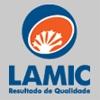Explore all the information on
Poultry gut health
The efficient conversion of feed into its basic components for optimal nutrient absorption is vital for both broiler and broiler breeder production and welfare. Gut health, an intricate and complex area combining nutrition, microbiology, immunology and physiology, has a key role to play. When gut health is compromised, digestion and nutrient absorption are affected which, in turn, can have a detrimental effect on feed conversion leading to economic loss and a greater susceptibility to disease. In addition, recent changes in legislation on the use of antimicrobials, differing feed requirements and more efficient birds highlight the need for a better understanding of gut function and gut health.
1. Introduction Corn ranks among the most globally cultivated cereals, with the production of more than 1200 million tons in the 2022/2023 harvest, mainly concentrated in the United States, China, and Brazil [1]. In Brazil, corn is the second most produced grain, following soybeans. For the 2023/2024 harvest, the estimated production in Brazil will exceed 118 million tons [2]. In the Brazilian market, the diversity of corn cultivars is substantial, whereby 98, 259, and 98...
Comments : 0
Recommendations: 1
Kimberly Livingston, Director of Technical Service at Optum Immunity, shares her expertise on modulating the immune response in animal gut health, discussing the transformative role of feed additives like probiotics, prebiotics, organic acids, and immune modulators...
Comments : 0
Recommendations: 0
1. Introduction Emerging biomarkers hold the potential to revolutionize veterinary medicine by enabling swift disease diagnosis, enhancing animal health monitoring, and optimizing welfare and production efficiency [1]. Nevertheless, the journey from biomarker identification to practical application is often fraught with challenges. Existing diagnostic tools for assessing gut health in poultry suffer from drawbacks, including invasiveness, subjectivity, labor intensiveness, and/or...
Comments : 0
Recommendations: 1
As global animal production has rapidly shifted towards reduced Antibiotic free, “Gut health” has become a popular expression and all-encompassing concept in the scientific community. The gastro-intestinal tract must provide a barrier function protecting against harmful environmental elements (e.g. toxins and pathogenic microbes), while simultaneously permitting appropriate nutrient absorption. Successful animal performance depends on the interplay between the intestine,...
Comments : 41
Recommendations: 15


New Generation of Water-Soluble Probiotics to Alleviate Gut Health Challenge During Feed Transition Period in Broiler Production
Suggested link
Introduction: Using low-dose antibiotics as feed additives can enhance poultry and swine performance. However, such practices have led to bacterial resistance and antibiotic residues in animal-derived foods. Consequently, there has been a shift towards finding replacements for antibiotics as growth promoters (AGPs). Among the various alternatives, organic acids have emerged as a significant option. Acidifiers have gained attention as viable alternatives to antibiotics in poultry...
Comments : 0
Recommendations: 0
Grain management, food safety, genetics, biosecurity and bird health will be the featured topics at the 2025 Latin American Poultry Summit. The theme, “Factors Affecting Efficient Poultry Marketing,” will be explored through a robust program featuring technical experts, key...
Comments : 0
Recommendations: 0
.jpg&w=3840&q=75)

(Mandarin) Strengthening Pellets for Better Feed Performance
Suggested link
Discover the power of butyric acid, a naturally occurring short-chain fatty acid found in animals. Used as a feed ingredient in poultry, swine, and calf production, butyric acid supports gut health and the immune system. Improve your animal's digestion and overall well-being with butyric acid. Visit our website to learn more and experience the benefits for yourself....
Comments : 0
Recommendations: 1
1. Introduction Gut microbiota, represented by bacteria, archaea, viruses, and eukaryotes, take part in regulating several functions in both humans and animals [1]. It has been estimated that the chicken gut can be colonized by at least 1000 different microbial strains that are involved in maintaining the intestinal health of hens while sustaining productivity and growth [2,3]. This microbiota takes part in various metabolic pathways related to nutrient digestion and absorption,...
Comments : 0
Recommendations: 2
The 36th edition of the APSS will be held at The University of Sydney – Abercrombie Business School, from 10-12 February 2025.
These will be some of the major themes: Layer Nutrition and Egg Quality, Broiler Nutrition, Managing Antibiotic-free Production, Sustainable use of Protein Ingredients and...
Comments : 0
Recommendations: 1
Hector Salgado (Jefo Nutrition) presents his poster on alternatives to traditional anticoccidials, during the Symposium on Gut Health in St. Louis, USA....
Comments : 1
Recommendations: 1
In the quest for more productive animals, additives such as liquorice and peppermint are emerging as powerful tools in animal nutrition. These herbal ingredients offer a range of benefits, from improving digestion to supporting respiratory function, making them ideal supplements for optimising animal performance. By harnessing their unique...
Comments : 0
Recommendations: 0
Surfactin is a powerful biosurfactant with significant potential in the livestock industry. It is renowned for its strong antimicrobial and anti-inflammatory properties, making it essential for enhancing animal gut health. By improving feed efficiency and boosting disease resistance, Surfactin plays a critical role...
Comments : 0
Recommendations: 3
Peter Ferket (NC State University) spoke on the advances of the industry in understanding and improving gut health, as well as the relevance of collaborative efforts, during IPPE 2018 in Atlanta, USA....
Comments : 2
Recommendations: 10
I.INTRODUCTION Both overheating and underheating affect the nutritional value and quality of SB (Karr-Lilienthal et al., 2004). Undercooked SB results in an excessive concentration of antinutritional factors, such as TI, decreasing the intestinal activity of pancreatic proteases. In contrast, excessive heat treatment results in a Maillard reaction that reduces nutrient digestibility (Araba and Dale, 1990). Thus, the objective of this study was to investigate the contributions of...
Comments : 0
Recommendations: 0
Probiotics are included in the feed and administered continuously during the entire production cycle to maintain intestinal integrity and strengthen the immunity of the bird, thus reducing the need for repeated medication. Alternatively, water-soluble probiotics are often applied to quickly react to upcoming stress situations in the flock – but they can negatively impact the formation of biofilm in the water lines. For this reason, formulations that reduce the formation of biofilms...
Comments : 0
Recommendations: 2
1. Introduction In intensive broiler production, the objective is to obtain high-performance productivity at a low cost. To accomplish production goals and satisfy the increased demand for poultry meat worldwide, intense genetic selection, health, management, and nutrition programs have emerged (Peralta et al., 2016). As a major development priority for nutrition, researchers are looking for natural additives to replace antibiotic growth promoters (AGPs). The AGPs were banned since...
Comments : 0
Recommendations: 1
INTRODUCTION Since the use of antibiotic growth promoters was banned by the EU on January 1st, 2006, several feed additives have been studied as alternatives to antibiotics, such as probiotics, prebiotics, synbiotics, and herbal medicines (1). Among these feed additives, prebiotics have been studied and supplemented broadly into broiler diets in recent years. Gibson and Roberfroid (2) defined a prebiotic compound as a non-digestible food ingredient utilized by intestinal microbiota....
Comments : 2
Recommendations: 2
The demand for functional foods has surged in recent decades and is projected to continue growing due to their potential to mitigate the risk of certain diseases. Eggs, recognized for their excellent nutritional value and health benefits, fall into this category. The widespread production and consumption...
Comments : 0
Recommendations: 1
Introduction The chicken gastrointestinal tract (GIT) harbors a very diverse microbiota, dominated by Bacteria, that influences health and growth performance of chicken. A healthy microbiota provides nutrients to the host and promotes competitive exclusion [1]. The composition of the GIT microbiota differs according to diet, age and genotype of hosts as well as the portion of the intestinal tract, among others [2]). The poultry industry has adopted the use of dietary additives...
Comments : 3
Recommendations: 1
Louisville, KY – The Poultry Science Association (PSA), the leading international professional scientific society dedicated to poultry, was excited to host an evening of recognition and honored many outstanding achievements and contributions to the field of poultry science.
During his...
Comments : 0
Recommendations: 1



.jpg&w=3840&q=75)
















.jpg&w=3840&q=75)










